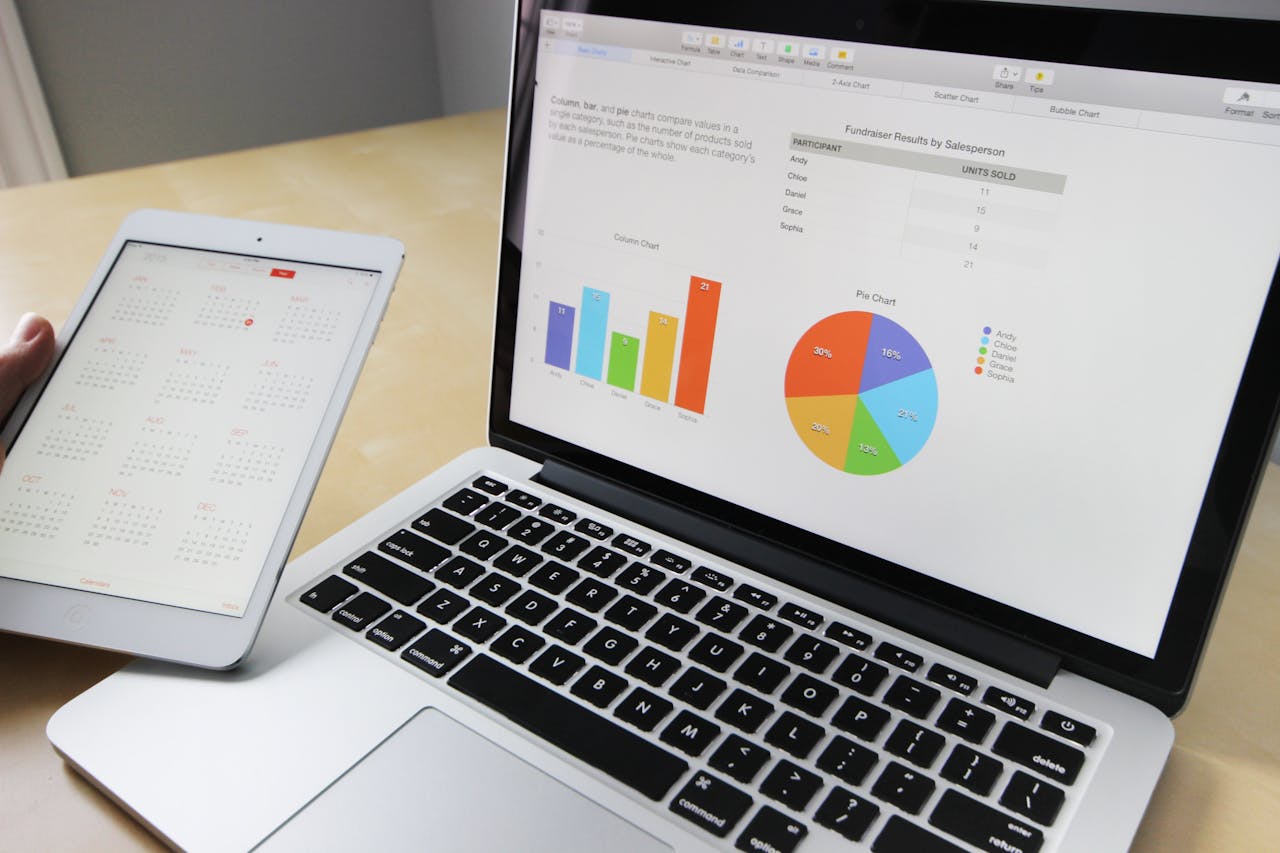Last mile delivery is a crucial stage in the supply chain that can greatly impact customer satisfaction. It has become increasingly important for businesses to improve their last mile delivery processes, not only to enhance efficiency and customer experience but also to contribute to sustainability efforts. This article explores the transformative effects of eco-conscious last-mile delivery on the logistics industry and how businesses can leverage this trend to stay ahead of the game.
With the growing awareness of environmental issues and the need for sustainable practices, eco-conscious last-mile delivery has emerged as a game-changer in the logistics industry. By integrating green logistics principles into their supply chain, businesses can minimize their carbon footprint and make a positive impact on the environment.
By adopting sustainable practices in last-mile delivery, businesses can not only meet the increasing customer demands for eco-friendly options but also reduce operational costs and improve overall efficiency. From utilizing electric vehicles and implementing route optimization software to exploring alternative delivery methods like drones and autonomous vehicles, there are various strategies that can be employed to revolutionize last-mile delivery.
In this article, we will delve into the challenges faced in last-mile delivery and explore innovative solutions to overcome them. We will also discuss the technological advancements shaping the last-mile delivery landscape and the benefits of efficient last-mile delivery. Additionally, we will provide strategies to optimize last-mile operations and explore the impact of blockchain technology on this crucial stage of the supply chain.
Key Takeaways:
- Eco-conscious last-mile delivery is crucial for improving customer satisfaction and contributing to sustainability efforts in the supply chain.
- Challenges in last-mile delivery can be overcome through innovative technologies and specialized handling techniques.
- Technological innovations such as delivery drones and autonomous vehicles are transforming last-mile delivery.
- Efficient last-mile delivery offers benefits such as improved customer experience and reduced environmental impact.
- Strategies like route optimization and collaborative delivery models can optimize last-mile operations.
Challenges in Last-Mile Delivery and Solutions
The last mile delivery process presents unique challenges that businesses must address to ensure efficient and customer-centric operations. These challenges include optimizing routes to minimize travel distances, managing customer expectations for real-time tracking and accurate communication, and ensuring specialized handling for fragile or perishable items.
Route optimization is crucial in overcoming the challenge of minimizing travel distances. Companies can leverage innovative technologies like route optimization software to determine the most efficient routes based on factors such as traffic conditions, delivery time windows, and order volumes. By streamlining routes, businesses can reduce fuel consumption, lower transportation costs, and improve overall delivery efficiency.
“Effective route optimization can lead to significant cost savings and improved delivery performance.”
Meeting customer expectations for real-time tracking and accurate communication is another challenge in the last mile delivery process. Customers today expect transparency and visibility into the status of their deliveries. To address this challenge, companies can implement robust tracking systems that provide real-time updates to customers, allowing them to track their shipments from pick-up to delivery. Additionally, clear and timely communication with customers regarding any delays or changes in delivery status is essential for ensuring customer satisfaction.
The proper handling of specialized items, such as fragile or perishable goods, is crucial to ensure their safe and timely delivery. Companies can invest in training programs for their personnel to ensure they have the necessary skills and knowledge to handle and transport these items with care. Implementing proper packaging and labeling practices, as well as collaborating with specialized logistics partners, can also help mitigate the risk of damage during the last mile delivery process.
Table: Challenges in Last-Mile Delivery and Solutions
| Challenges | Solutions |
|---|---|
| Optimizing routes | Utilize route optimization software to determine the most efficient routes based on factors such as traffic conditions, delivery time windows, and order volumes. |
| Real-time tracking and communication | Implement robust tracking systems to provide customers with real-time updates on the status of their deliveries. Ensure clear and timely communication regarding any delays or changes in delivery status. |
| Specialized handling | Invest in training programs for personnel to handle and transport specialized items with care. Implement proper packaging and labeling practices. Collaborate with specialized logistics partners, if necessary. |
By addressing these challenges through innovative technologies, efficient processes, and effective communication strategies, businesses can optimize their last mile delivery operations and enhance customer satisfaction.
Technological Innovations in Last-Mile Delivery
The logistics industry has witnessed significant advancements in last-mile delivery, driven by innovative technologies. Delivery drones, autonomous vehicles, smart lockers, and delivery robots are shaping the future of efficient and sustainable last-mile delivery.
Delivery drones have emerged as a game-changer in the field of logistics. These unmanned aerial vehicles can navigate through traffic and deliver packages directly to customers’ doorsteps, reducing delivery times and costs. Companies like Amazon and UPS have already started testing and implementing drone delivery systems, revolutionizing the way packages are transported.
Autonomous vehicles are another technological breakthrough in last-mile delivery. These vehicles, equipped with advanced sensors and artificial intelligence systems, can navigate urban environments and deliver packages with minimal human intervention. They offer a safe, reliable, and cost-effective solution for transporting goods, eliminating the need for human drivers.

Smart lockers have also gained popularity in last-mile delivery. These secure storage units are strategically placed in convenient locations, allowing customers to pick up their packages at their own convenience. Smart lockers provide flexibility and eliminate the need for repeated delivery attempts, reducing costs and improving customer satisfaction.
Delivery robots are another innovative technology revolutionizing last-mile delivery. These autonomous robots are designed to navigate sidewalks and deliver packages to customers’ homes. With their compact size and ability to avoid obstacles, delivery robots offer a sustainable and efficient alternative to traditional delivery methods.
The Future of Last-Mile Delivery
As technology continues to evolve, we can expect even more exciting innovations in last-mile delivery. From flying taxis and underground delivery networks to augmented reality and blockchain integration, the future of last-mile delivery holds immense potential for enhancing efficiency, reducing costs, and improving customer satisfaction.
Benefits of Efficient Last-Mile Delivery
Efficient last-mile delivery offers numerous benefits to businesses and consumers alike. By optimizing operations and leveraging innovative technologies, companies can enhance the overall customer experience, reduce costs, expedite deliveries, and minimize their environmental impact.
Improved Customer Experience
One of the key advantages of efficient last-mile delivery is the improved customer experience it provides. Timely deliveries and real-time tracking capabilities allow customers to have greater visibility and control over their shipments. This transparency builds trust and enhances satisfaction, leading to increased customer loyalty and repeat business.
In addition, efficient last-mile delivery enables businesses to provide accurate and proactive communication regarding delivery schedules and any potential delays. This level of responsiveness helps manage customer expectations and ensures a positive experience throughout the delivery process.
Reduced Costs
Efficiency in last-mile delivery operations can significantly reduce costs for businesses. By optimizing routes and implementing route optimization software, companies can minimize travel distances, save fuel, and lower transportation costs. Streamlining operations also reduces the need for unnecessary backtracking, ultimately leading to cost savings.
Furthermore, efficient last-mile delivery allows businesses to improve inventory management, reducing carrying costs and the risk of stock obsolescence. By accurately predicting demand and optimizing delivery schedules, companies can minimize excess inventory and improve overall supply chain efficiency.
Faster Deliveries
In today’s fast-paced world, customers have increasingly high expectations when it comes to delivery speed. Efficient last-mile delivery enables businesses to meet these expectations by optimizing routes, leveraging real-time tracking systems, and implementing agile delivery strategies.
By reducing travel distances and utilizing technology-driven solutions, companies can ensure prompt and timely deliveries. This not only meets customer demands but also contributes to a positive brand image and customer satisfaction.
Reduced Environmental Impact
Efficient last-mile delivery plays a crucial role in reducing the environmental impact of logistics operations. By optimizing routes and minimizing travel distances, businesses can decrease carbon emissions and contribute to sustainability efforts.
Furthermore, the adoption of eco-conscious practices such as using electric vehicles or alternative fuel sources can further reduce the environmental footprint of last-mile delivery. By prioritizing sustainability and embracing innovative solutions, companies can align their operations with the growing global focus on environmental conservation.
| Benefit | Description |
|---|---|
| Improved Customer Experience | Timely deliveries and real-time tracking enhance customer satisfaction and loyalty. |
| Reduced Costs | Efficiency in operations leads to cost savings through optimized routes and inventory management. |
| Faster Deliveries | Optimized routes and real-time tracking enable prompt and timely deliveries. |
| Reduced Environmental Impact | Efficient last-mile delivery minimizes carbon emissions and supports sustainability efforts. |
Strategies to Optimize Last-Mile Operations
Efficient last-mile delivery operations are crucial for businesses to meet customer expectations and stay competitive in the logistics industry. By implementing the right strategies, companies can optimize their last-mile processes to improve efficiency, reduce costs, and enhance customer satisfaction. Here are some key strategies to consider:
1. Route Optimization:
Route optimization plays a significant role in improving last-mile delivery efficiency. By utilizing route optimization software, businesses can create optimized delivery schedules that minimize travel distances and ensure timely deliveries. This not only saves time and fuel costs but also reduces carbon emissions, contributing to environmental sustainability.
2. Real-Time Tracking:
Real-time tracking is essential for providing customers with accurate information about the status of their deliveries. By implementing robust tracking systems, businesses can offer customers the ability to track their packages in real-time, increasing transparency and building trust. Real-time tracking also allows businesses to proactively manage any delivery delays or issues that may arise.
3. Collaborative Delivery Models:
Collaborating with local businesses or contractors for last-mile delivery can greatly increase operational efficiency. By leveraging existing networks and resources, businesses can tap into local expertise and reduce the distance between the warehouse and the customer. This collaborative approach helps optimize delivery routes, reduce costs, and improve delivery speed.
4. Warehouse Proximity:
Locating warehouses closer to customers can significantly reduce transit times and improve last-mile delivery. By strategically placing warehouses in central locations, businesses can ensure faster deliveries and better serve customers in urban areas. Warehouse proximity also enables businesses to respond quickly to customer demands and minimize the distance traveled for each delivery.
5. Flexibility and Adaptability:
Flexibility and adaptability are key in optimizing last-mile operations. By being responsive to changing market conditions and customer demands, businesses can adjust their delivery processes accordingly. This includes having the ability to scale operations during peak periods, offering flexible delivery options such as time windows or pickup points, and adapting to new technologies and industry trends.
Implementing these strategies can help businesses optimize their last-mile operations, improve customer satisfaction, and stay ahead of the competition in the fast-paced logistics industry.
Blockchain’s Impact on Last-Mile Delivery
Last-mile delivery is a critical component of the logistics industry, and advancements in technology are constantly shaping and improving this stage of the supply chain. One such technology that has the potential to revolutionize last-mile delivery is blockchain. Blockchain’s impact on last-mile delivery extends beyond just providing real-time tracking and enhanced security. It offers a range of benefits that can streamline operations and increase efficiency.
One of the key advantages of blockchain in last-mile delivery is the ability to provide real-time tracking for shipments. With blockchain, every step of the delivery process is recorded and stored securely in a decentralized ledger. This allows customers and businesses to track their shipments in real-time, ensuring transparency and reducing the risk of lost or misplaced packages.
In addition to real-time tracking, blockchain technology also enhances security in last-mile delivery. The use of encryption and smart contracts ensures that all transactions and data are secure and tamper-proof. This can help prevent fraud and unauthorized access to sensitive information, providing peace of mind for both businesses and customers.
Furthermore, the decentralized nature of blockchain promotes trust and transparency in the last-mile delivery process. By distributing data across multiple nodes, blockchain eliminates the need for a central authority, reducing the risk of manipulation or interference. This decentralized approach not only enhances security but also creates a more efficient and collaborative ecosystem.
| Benefits of Blockchain in Last-Mile Delivery |
|---|
| Real-time tracking for shipments |
| Enhanced security through encryption and smart contracts |
| Decentralization and trust in the delivery process |
Blockchain’s impact on last-mile delivery extends beyond tracking and security. It has the potential to transform the entire logistics industry by improving efficiency, reducing costs, and minimizing errors. As businesses continue to adopt blockchain technology, we can expect to see a more streamlined and transparent last-mile delivery process that benefits both companies and customers alike.
Conclusion
Eco-conscious last-mile delivery is revolutionizing the logistics industry, offering a sustainable approach to supply chain management. With a focus on reducing environmental impact and improving customer experience, businesses can shape a more sustainable future for the industry.
By embracing innovative technologies, such as delivery drones, autonomous vehicles, and smart lockers, companies can enhance operational efficiency and reduce carbon emissions. Route optimization software and real-time tracking systems further contribute to improved logistics processes.
Efficient last-mile delivery not only benefits businesses but also satisfies customer expectations. Timely deliveries, accurate communication, and flexible handling of fragile items enhance the overall customer experience.
As the industry continues to evolve, embracing eco-conscious last-mile delivery and sustainable practices will be key to staying ahead of the game. By prioritizing sustainability in logistics, businesses can achieve long-term success while making a positive impact on the environment.
- Customer Engagement and Loyalty: Innovating the Future of Saudi Arabia’s Dedicated Cargo Airline - December 23, 2024
- Regulatory and Compliance: Pioneering the Future of Saudi Arabia’s Dedicated Cargo Airline - December 21, 2024
- Financial Strategies: Fueling the Growth of Saudi Arabia’s Dedicated Cargo Airline - December 20, 2024






